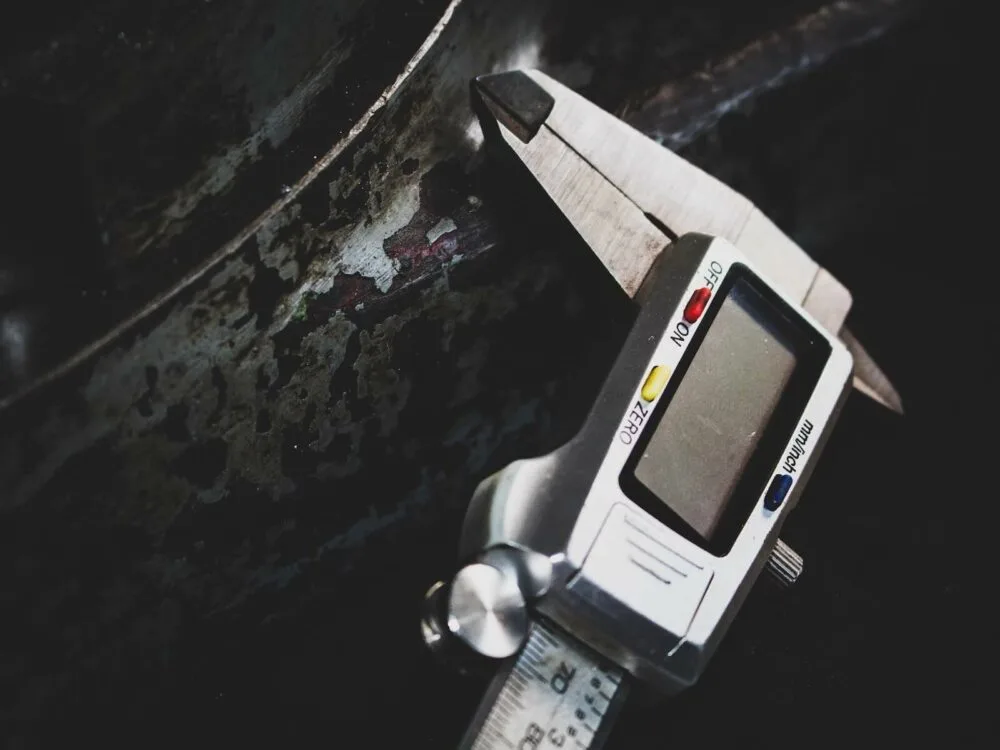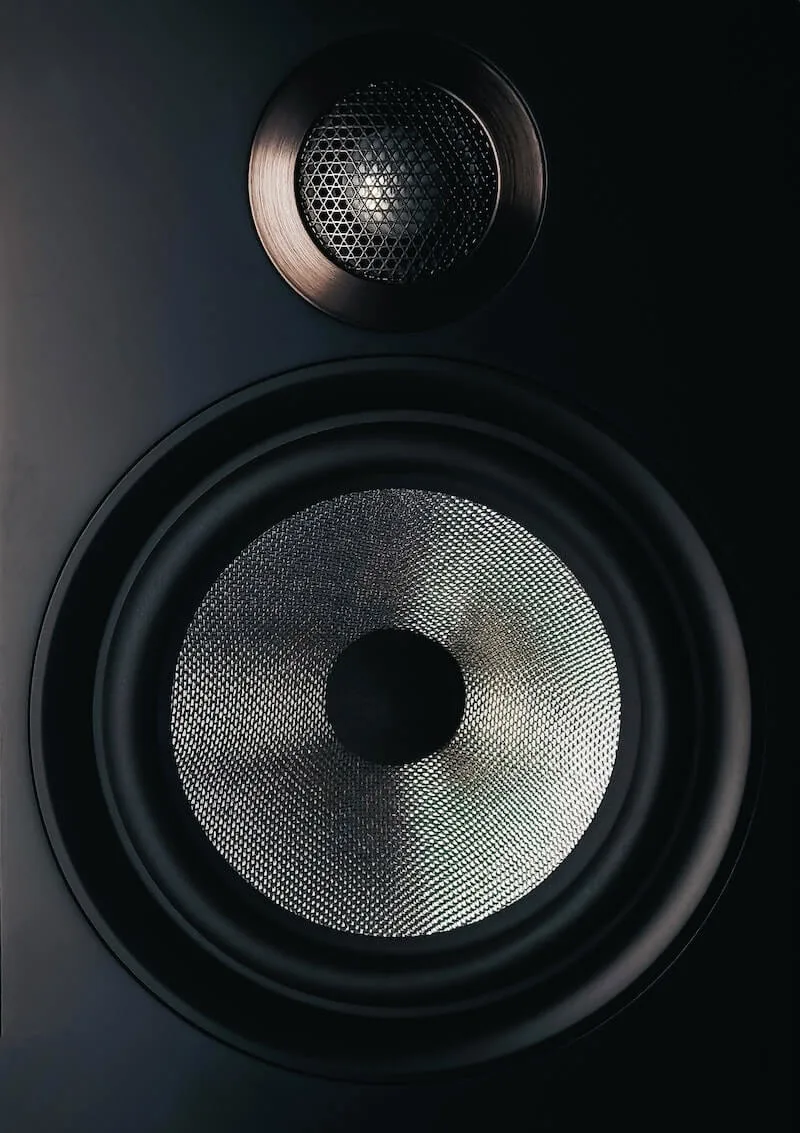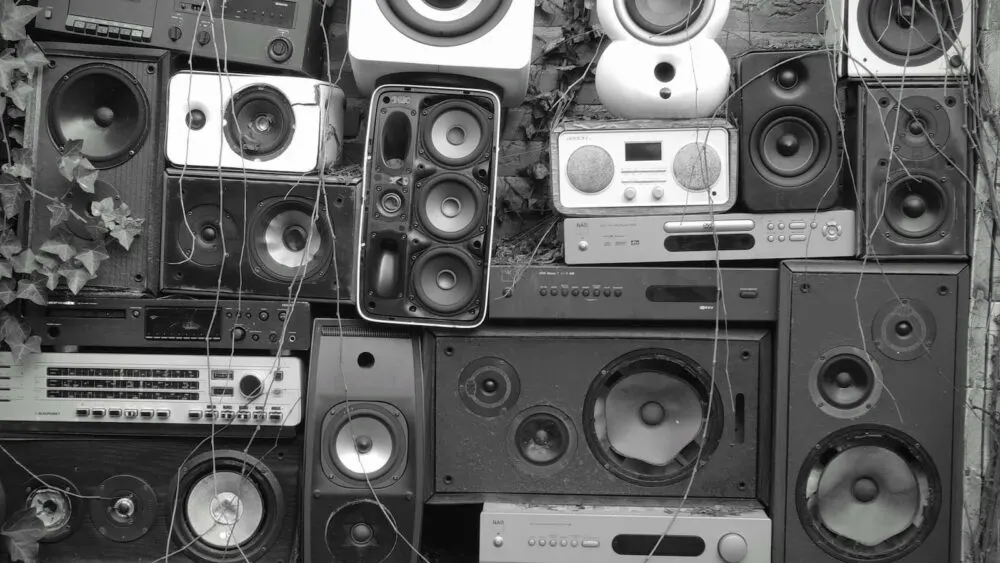Unfortunately, there is no standard size for speakers, which makes changing them complicated. Several measurements must be considered to get new ones that fit your room. This article explains how to measure speaker size correctly, what you will need, and what to think step by step.
How to measure speaker size
You won’t need many things to measure your speaker size. It’s easier than you think. Pay attention to the steps.
Things you need
The first thing to do is to equip yourself properly. One option is to use a vernier caliper with its internal and external jaws, the locking screw, imperial and metric scale, and the final blad. It will help measure the width, thickness, distances, and small surfaces.

On the other hand, a retractable steel measuring tape will come in handy, especially for measuring diagonals. Finally, you will need a marker, such as a pencil and paper, to write down the measurements.
Tips and relevant info:
- Make sure the measuring tape is professional, with notches on every foot.
- Get a good marker. If it is a pencil with a sharp point and a pencil sharpener handy.
- While measuring, mark both sides of the speaker to ensure accuracy.
- Double-check all the dimensions before purchasing because every model of every brand can vary a lot. Repeat the process for every speaker you need to change.
- The speaker dimensions’ formula is width + depth.
- The total speaker volume = length x width x depth.
- The total surface area = length x width.
- Each speaker has a different driver size; the larger it is, the lower the frequency will be.
Measuring speaker size
To measure the speaker size, you first need to remove the speaker from its housing, including the covers and grill. You will use the measuring tape to calculate the speaker’s width, depth, and height. For the diagonal size, you will need the vernier caliper tool.
How to measure the speaker’s width?
Measure from one side to the other, passing through the center, and mark both sides of the housing. Don’t forget to measure the front and back of the housing.
How to measure the speaker’s depth and height?
This is the most complicated part because of the different parts of the speaker. The first thing to do is to place the measuring tape on a flat surface. Then, place the speaker on top of it and measure first the wider outer part and then the smaller inner part.
To measure the mounting height, having another long, rigid object would be helpful. Stand on the floor next to the wall. With the measuring tape and the widest part of the speaker on top of it on the floor, pull the measuring tape up the wall while resting a long, rigid object on the smaller circumference of the speaker, which will serve as an indicative model for how high the height reaches

You will then be able to measure the mounting height accurately. Remember to write down all measurements while you are doing this. It is essential to do this on flat surfaces.
How to measure the speaker’s diagonal size?
As we said, this is when the vernier caliper comes in handy. Use the jaws of the caliper to hook the tool to each part of the cabinet. Be careful not to add pressure. Remember that multiplying the length by the width can get the total surface area.
Measuring mounting holes for new speakers
- Measure the mounting hole diameter from the outside, i.e., from the outer edges of the circumference.
- Then, measure the inner diameter, disregarding the outside margins. Remember to write down the measurements.
- It could be helpful to write down the measurements between the outer and inner diameters.
- To measure the depth, mark several points around the speaker’s edges. Join them by drawing a line, and this is the depth.
To measure the mounting holes, you need to measure the outside diameter with a ruler and mark it against its outer edge. Next, you must measure the inside diameter with a drill bit larger than the outside. Mark the point where the two sides meet.
Different types of speakers
Tweeter: from 3,000Hz up to 20,000Hz.
- Horn tweeters – the strongest for high frequencies.
- Dome tweeters – the most common, distributes sounds appropriately.
- Tweeter cones – the most affordable, work properly as well.
Woofers: from 80Hz up to 1,000Hz. Ideal for low-frequency sounds.
Mid-woofer: 1,000Hz to 4,000Hz. Smaller than the woofers, lighter, cone-shaped. For medium frequencies.
Subwoofer: lower than 80Hz, without distorting the sound. They are used for professional live sounds.
Dynamic horns: permanently fixed magnet and a moving coil.
Electrodynamic horns: its conical shape is separated from the magnetic field, so it works with the vibration.

Which speaker size should you get?
On the one hand, it should follow your measurements if you have limited space. However, size and power are not always directly proportional, so if you are looking for a louder or wider system (e.g., a 10″ vs. a 12″ subwoofer), you should compare the characteristics of your speaker with those you might be interested in, in addition to the measurements. The alternative is always to buy a new speaker system, but it will probably cost you much more.
How to measure speaker size: The bottom line
There you have it: the steps to measure the size of your speaker and compare it with other models. In summary, you should consider all measurements of the housing – height, width, depth, and circumference – as well as the size and type of each component inside. You can use a ruler or vernier caliper for accurate results. Finally, if you want to buy a new or upgrade your existing system, don’t forget to check its specs against those you wish for the best performance. Good luck!